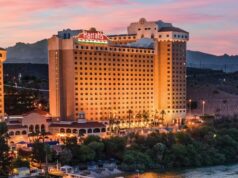WASHINGTON, D.C.—The latest American Hotel & Lodging Educational Foundation (AH&LEF) and Smith Travel Research 2006 Lodging Survey provides valuable insight into industry availability of liquid soap dispensers, recycling programs, air purifiers, energy management sensors, linen/towel reuse programs and nonsmoking rooms.
A total of 42,407 hotels were polled and twenty-one percent (9,300 hotels) responded to the survey that wrapped up the first quarter of this year. Survey results were released earlier this summer. The survey was funded by AH&LEF, the nonprofit affiliate of AH&LA, and tracked the size, scope and emerging trends of the U.S. lodging industry. The AH&LA considers the survey the most comprehensive of its kind.
“Due to its sample size and updated questions, the 2006 Lodging Survey provides the largest representative sampling and view of trends in the American lodging industry, as well as an exceptional summary analysis comparing results and key findings,” says Joseph A. McInerney, CHA, AH&LA president & c.e.o. “This information provides members with essential information on the trends that impact their guests, properties, and bottom line. In addition, the survey assists members in benchmarking their properties, and vendors in determining segments that have growth opportunities for their products.”
Liquid Soap Dispensers
By chain scale, the survey found that liquid soap dispensers are most common in luxury and independent hotels (12 percent). Upscale and midscale without F&B are least likely to use them (2 percent). By location, properties in resort areas are most likely to have them (12 percent) while suburban hotels are least likely (3 percent). By price segment, economy hotels use them most (7 percent). Properties with fewer than 50 rooms are also most likely to have them (14 percent). A total of 6 percent of overall survey respondents use dispensers.
McInerney says dispensers still have not caught on to a great degree because many travelers are not comfortable using them. Perception is an issue. Guests at upper scale properties sometimes perceive dispensers as an item that does not provide the same value or level of class as individual amenity bottles. McInerney adds that some hoteliers, especially at the economy level, still have the impression that dispensers will be tampered with.
Recycling Programs
By chain scale, recycling programs are most common in luxury hotels (67 percent) and upper upscale properties (57 percent). They are least common in economy (18 percent) and midscale without F&B (26 percent). By location, urban hotels (51 percent) and resort locations (47 percent) are most likely to have recycling programs and interstate hotels are least likely (27 percent). Hotels with more than 130 rooms are most apt to have recycling and those with between 50 to 64 least apt (23 percent). A total of 47 percent of overall survey respondents have recycling programs.
Linen/Towel Reuse Programs
By chain scale, linen/towel reuse programs are most common in upper upscale (90 percent) and independent properties (65 percent). They are least common in economy hotels (55 percent). By location, the programs are more likely to be found in urban hotels (75 percent) and airport locations (70 percent) and least likely to be found in interstate properties (59 percent). By room range, the water-saving programs are most apt to be found in hotels with 130 or more rooms and least apt in hotels with 50 to 64 rooms. Comparing the 2006 survey with those done in the past, there has been a dramatic increase in the number of hotels that implement these types of programs—72 percent in 2006 compared to only 10 percent in 1996.
Linen/towel reuse programs help extend the life of towels and linens because they are not washed as often. The programs save not only water but also the energy to heat water, and the amount of chemicals needed. The environment benefits because less energy needs to be generated and fewer chemicals are released into water systems.
Air Purifiers in Guestrooms
By chain scale, air purifiers are most common in luxury (29 percent) and upper upscale hotels (19 percent). They are least common in economy properties (14 percent). By location, there is a very even representation of purifiers—interstate (18 percent) down to airport and suburban (15 percent). By room range, air purifiers are most apt to be found in hotels with 65 to 94 rooms. The survey proves that air purifiers are much more prevalent today (16 percent of responding hotels) compared to 6 percent in 1998.
Energy Management Sensors in Guestrooms
By chain scale, guestroom energy management sensors are most common in luxury hotels (60 percent) and upper upscale (38 percent). They are least common in midscale with F&B (14 percent) and economy (13 percent). By location, energy management sensors are most apt to be found in urban locations (30 percent) and least apt to be found in interstate locations (13 percent). Sensors are most common in hotels with more than 130 rooms. In 2001, 14 percent of overall survey respondents reported having energy management sensors; in 2006, 21 percent did.
McInerney says sensors tend to be found most in new hotels. Because of their cost, he says owners of older hotels are more reluctant to retrofit rooms with them. They may not intend to own the hotel long enough to recover the initial investment.
Percentage of Guestrooms That are Nonsmoking
By chain scale, the percentage of nonsmoking rooms is highest in luxury hotels (86 percent) and lowest in economy properties (66 percent). By location, the percentage of nonsmoking rooms is highest in resort locations (77 percent) and lowest in interstate locations (60 percent). It is no surprise that nonsmoking rooms increasingly are becoming more common—74 percent overall today versus 61 percent in 1998.
“We are definitely seeing an increase in the number of nonsmoking hotels,” McInerney says. “At first it was happening at the upscale and luxury level. Now we are seeing it at all levels. It will be interesting to see how the industry moves forward with nonsmoking.”
Complete survey results are now available at no cost to AH&LA members at the organization’s website and to nonmembers for a fee. The next survey will be conducted in two years.
Glenn Hasek can be reached at greenlodgingnews@aol.com.







